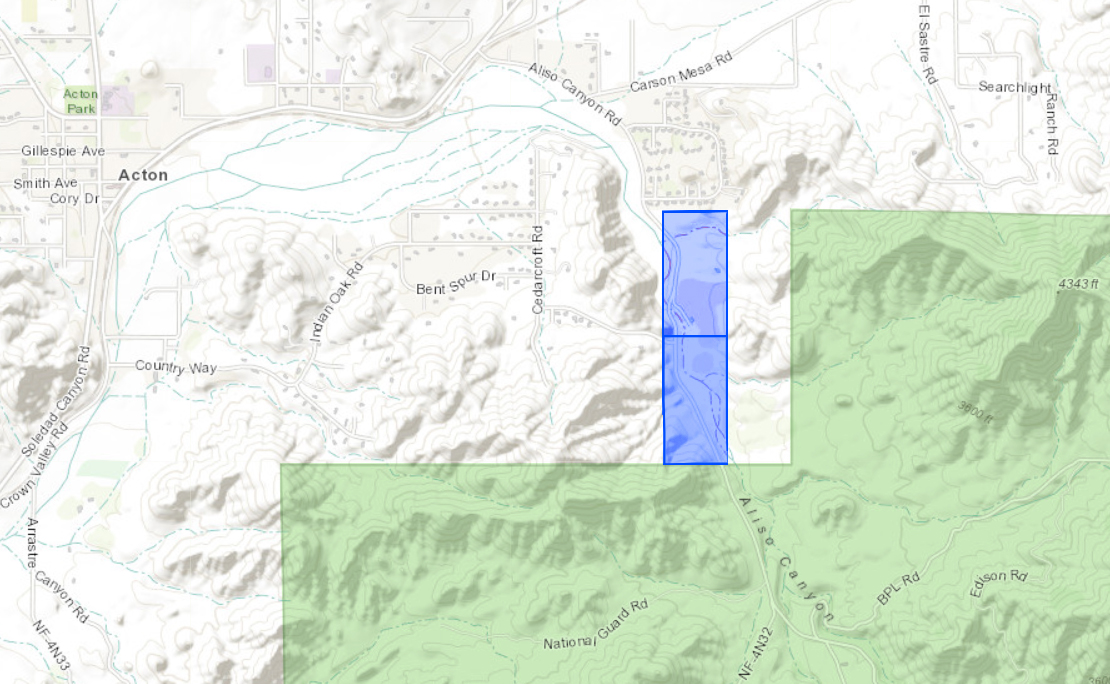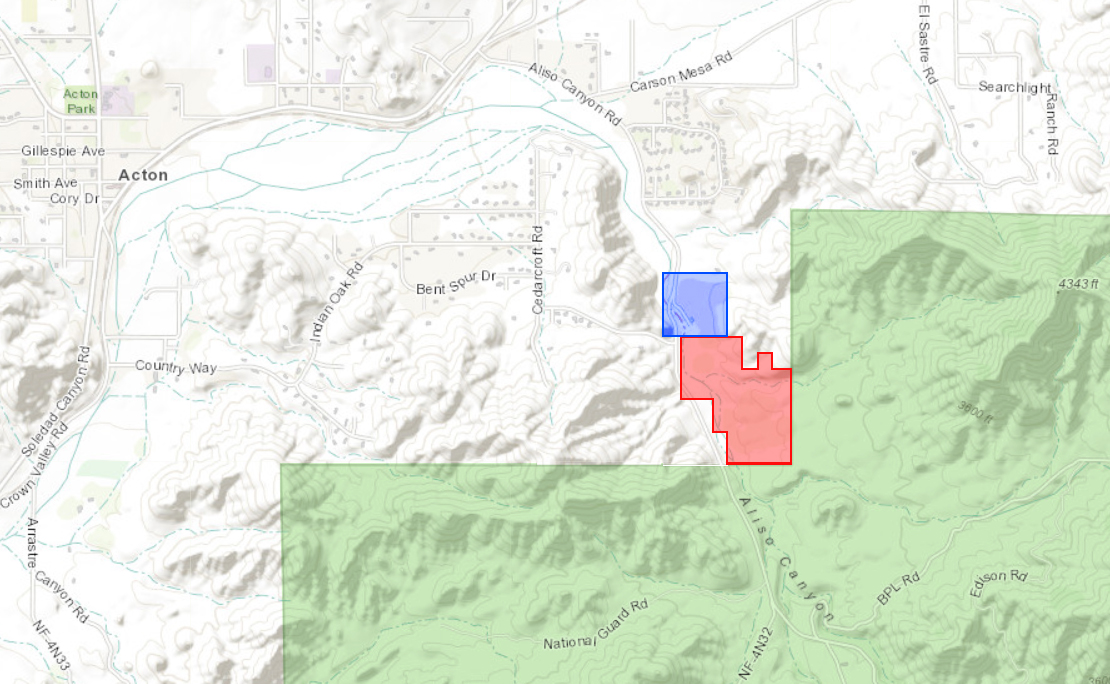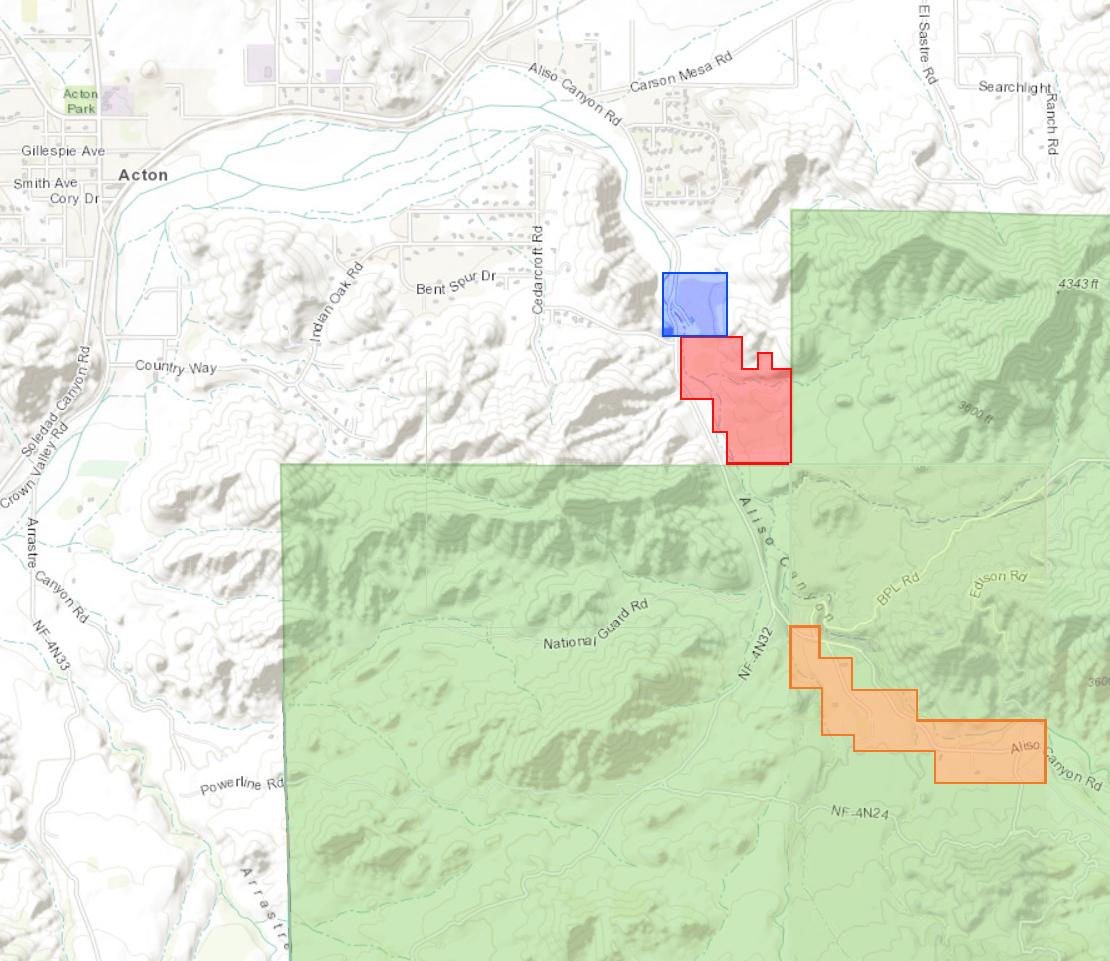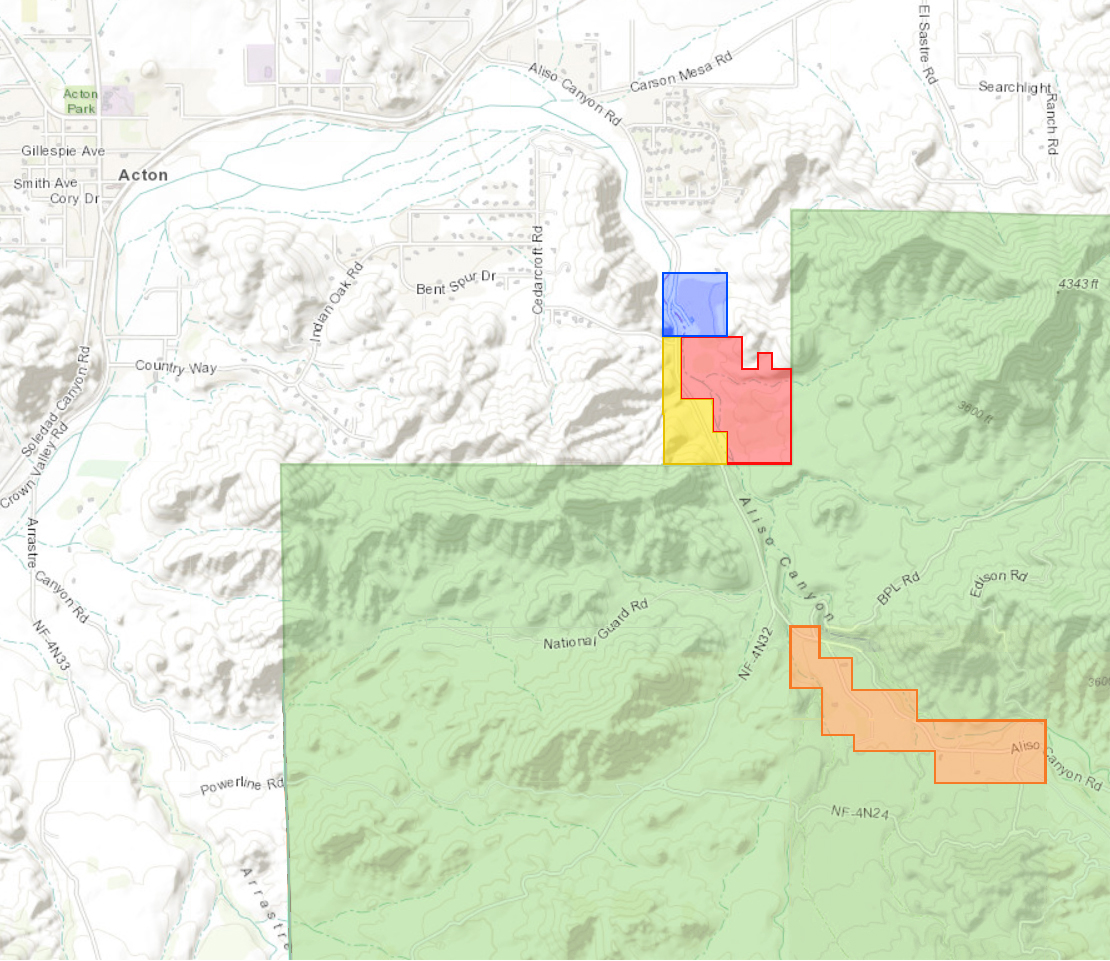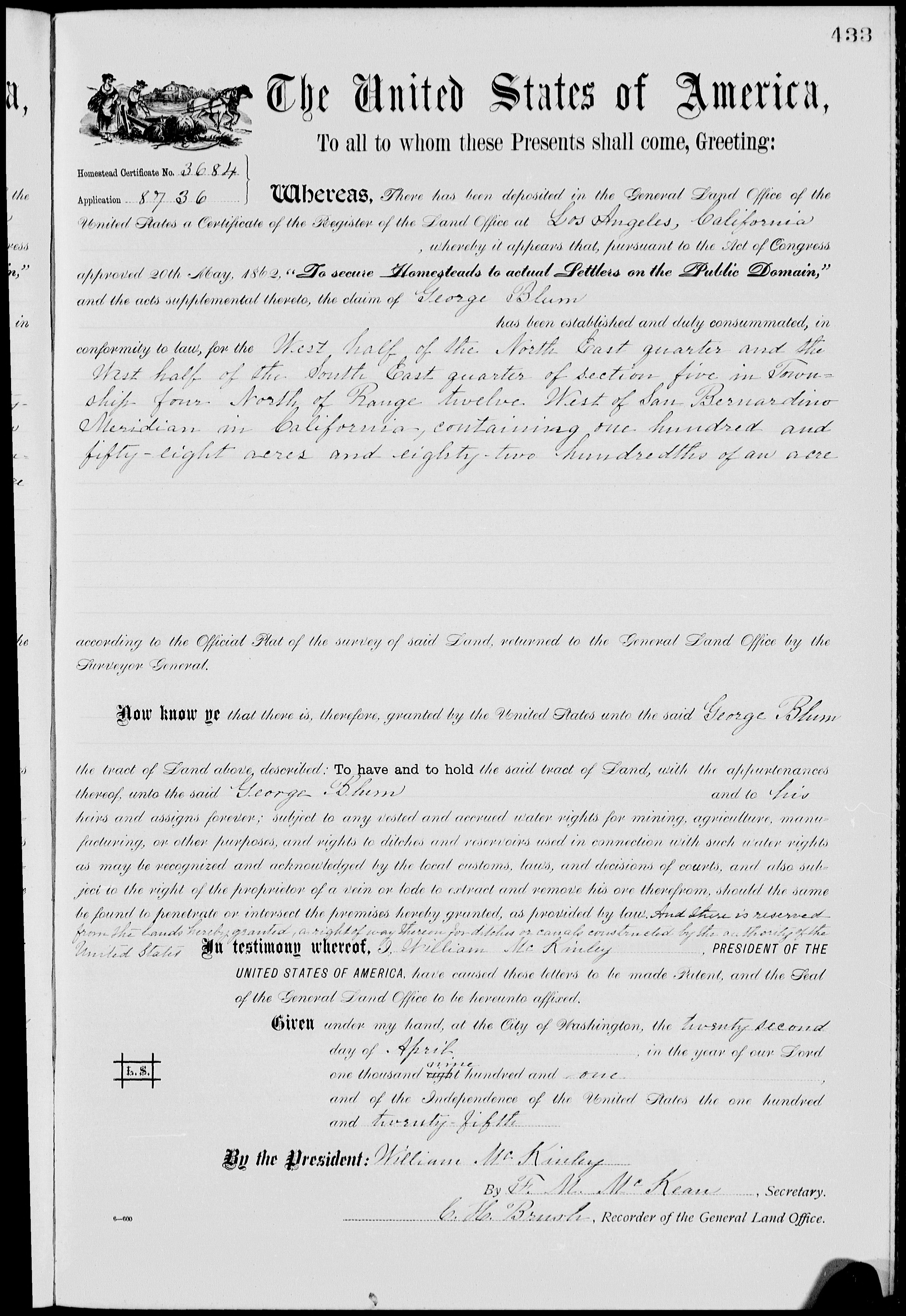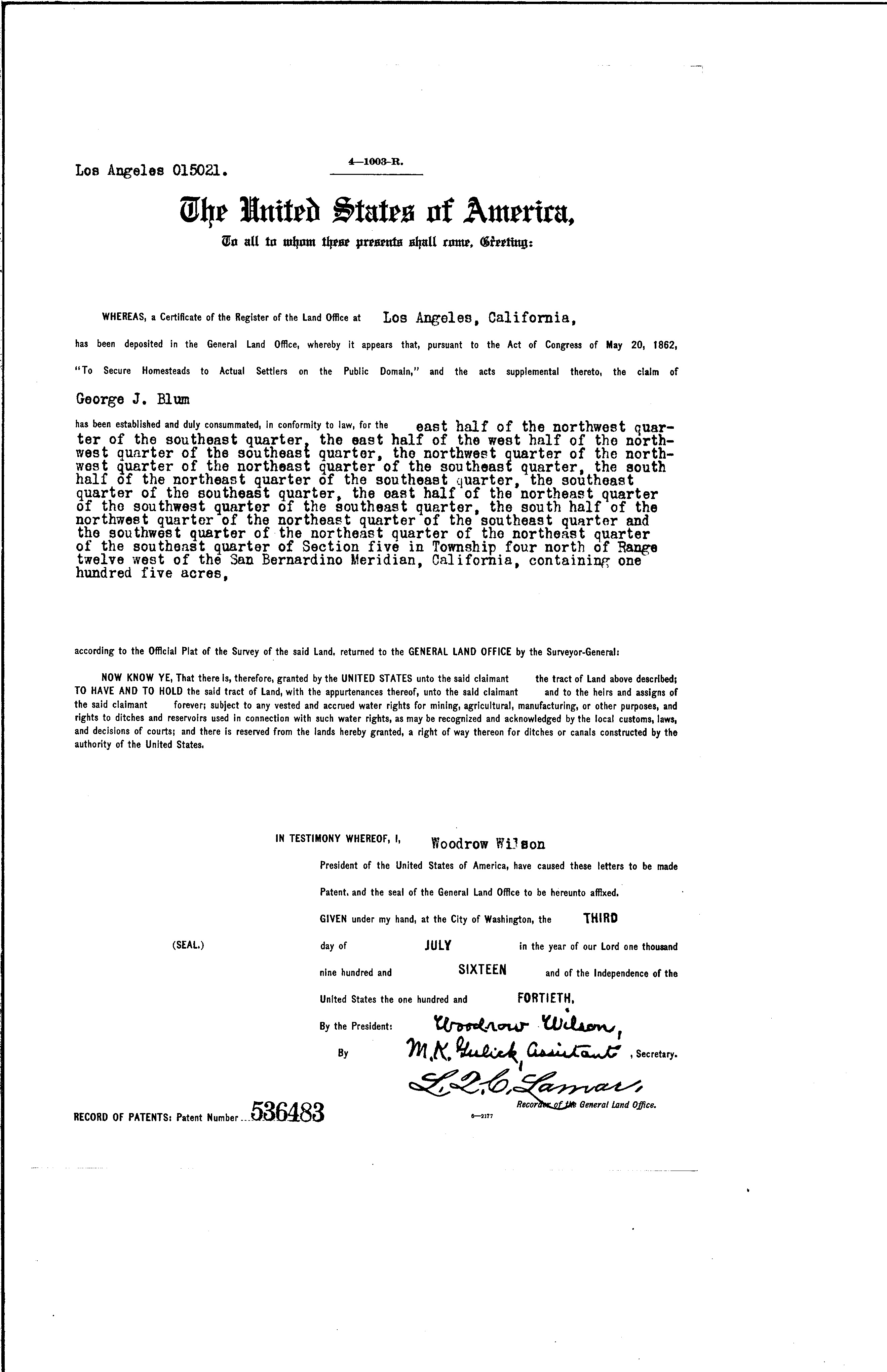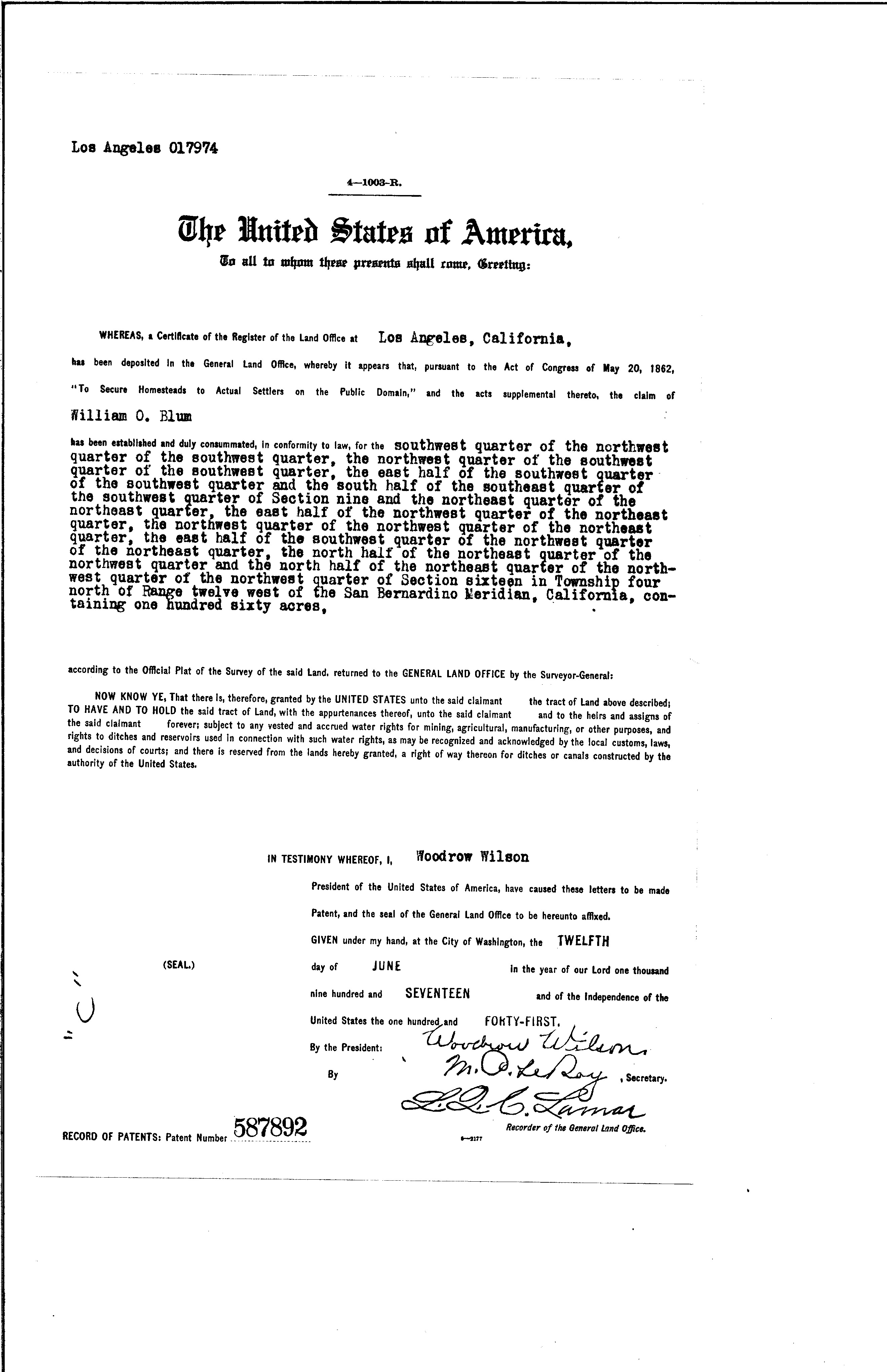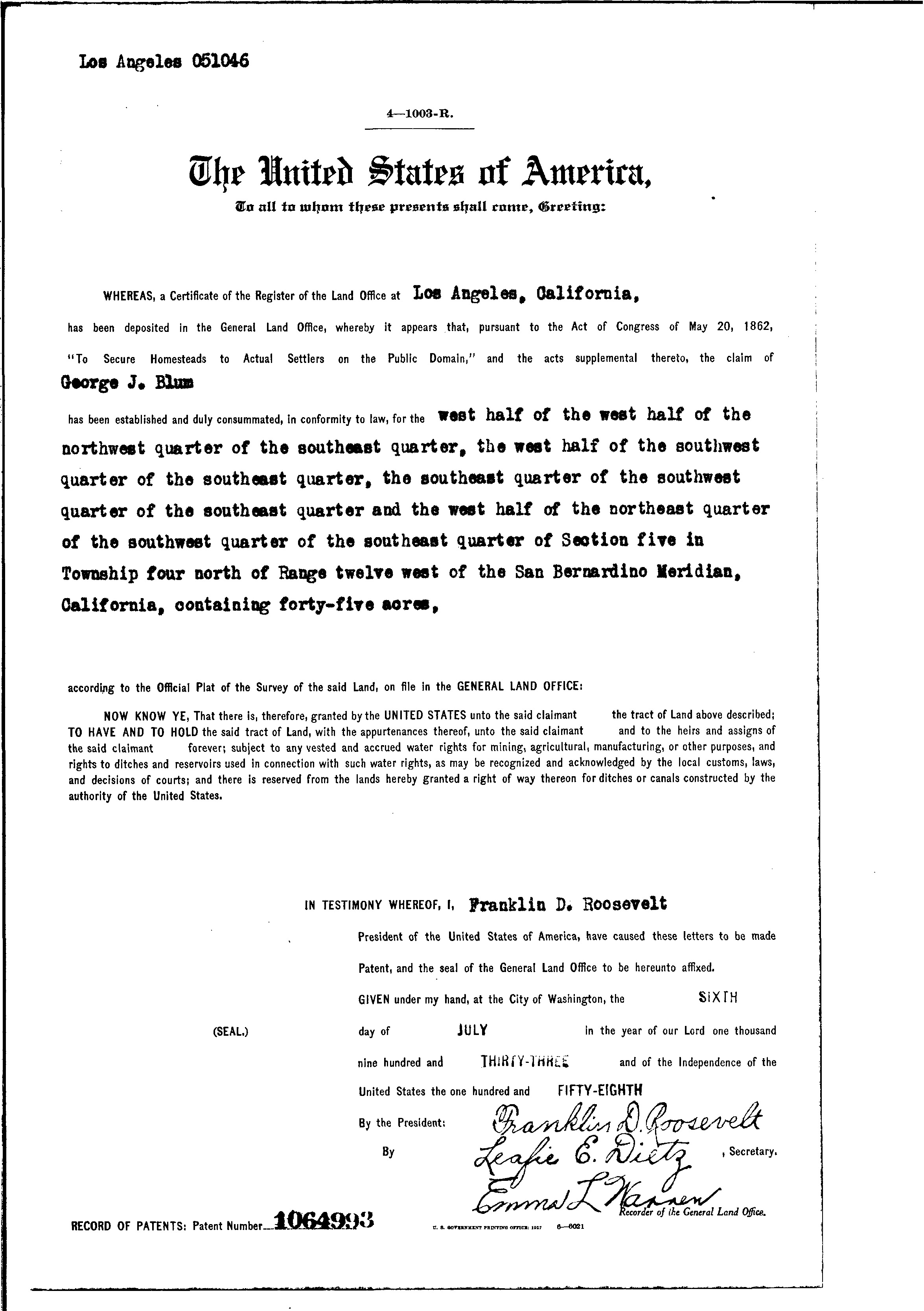George Blum & Sons' Homesteading History
Acton, California
|
ABOVE: George Blum, a Swiss stonecutter-turned-rancher, arrived in the United States in 1880 and settled in Acton in 1891. He filed for a patent under the 1862 Homestead Act to 160 acres — two halves of two quarter sections — in Aliso Canyon, near the headwaters of the Santa Clara River. The National Forest (shown in green on map) bordered Blum's 160 acres on the south. The patent was issued 10 years later, on April 22, 1901. The property actually measured to 158.82 acres (blue on map). Simultaneously in 1901, Blum turned back 118.82 acres, retaining 40 acres. (Roll over map to see the acreage he kept, in blue.) It was on these 40 acres that Blum built his first and second homes and other structures — which still stand in 2019. The relinquishment of the 118.82 acres was recorded under the Forest Reserve Act of March 2, 1899 (30 Stat. 993), which adjusted forest boundaries. Evidently it was intended to be an exchange of land with the National Forest, which took nearly two decades to complete (see below).
ABOVE: Blum's elder son, George John Blum (1889-1970), was issued a patent to 105 acres under the 1862 Homestead Act on July 3, 1916. The patent reclaimed some of his father's original southern acreage and expanded the ranch to the National Forest boundary on the south and east (red on map). George John Blum was the father of Elizabeth Blum Billet, who would eventually own and operate her father's and grandfather's ranch with her husband, Ray Billet.
ABOVE: One year later, on June 12, 1917, George Blum's second son, William Oscar Blum (1890-1953), was issued a patent under the 1862 Homestead Act to 160 acres along the river in the National Forest, even closer to the headwaters (orange on map). Without seeing additional documentation, we don't know if this was related to the 1901 land swap, but it seems apparent. William O. Blum filed for the patent twice, suggesting the federal government might have been slow to act on it. (In 1917, the government approved one of the identical applications and voided the other.)
ABOVE: On July 6, 1933, son George J. Blum was issued a patent to an additional 45 acres under the 1862 Homestead Act (yellow on map), equaling the remainder of the previously relinquished southern portion of his father's original land patent. His father didn't live to see it; George Blum the elder died July 31, 1932.
George Blum Homestead Patent, 1901.
George J. Blum Homestead Patent, 1916.
William O. Blum Homestead Patent, 1917.
George J. Blum Homestead Patent, 1933.
Maps and text ©2019 SCVHistory.com.
|

